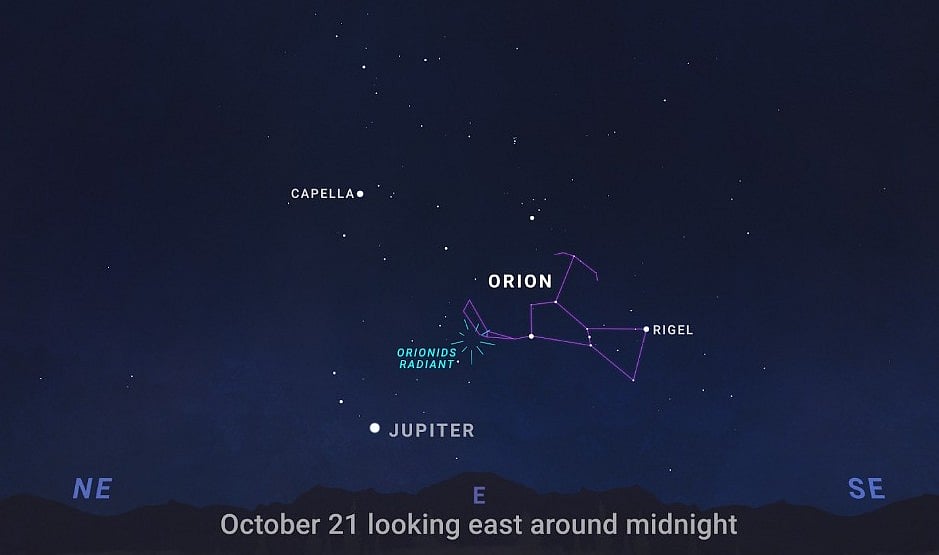Free show in the sky: Where, when to watch Orionids
Celestial show: Multiple bright meteors streak across the sky during early morning hours

Get ready for a dazzling celestial event as the Orionid meteor shower peaks from October 21 to 23, 2025.
Enthusiasts and casual stargazers alike can expect to see multiple bright meteors streaking across the sky during the early morning hours between 1 am and dawn.
Annual meteor shower
This annual meteor shower is active from roughly October 2 through November 7 and is renowned for its fast, bright meteors that can travel speeds up to 148,000 mph (about 41 miles per second).
The Orionid meteors appear to radiate from the constellation Orion, which is why the shower is named after it.
Observers can look toward the area near the bright star Betelgeuse in Orion for the radiant point.
Best time to watch
The optimal viewing time is during the pre-dawn hours when Orion stands high in the southern sky.
This year, the peak coincides with the new moon on October 21, ensuring dark skies free from lunar light interference, making meteor visibility even better.
The Orionid meteor shower is caused by debris left behind by Halley's comet (officially comet 1P/Halley).
As Earth moves through this trail of cometary dust and particles, these fragments enter Earth's atmosphere and burn up, creating dazzling streaks of light.
76-year orbit
Halley's comet, with its 76-year orbit, last passed near Earth in 1986 and will return in 2061. It produces two meteor showers annually: the Eta Aquarids in May and the Orionids in October.
For the best experience, find a dark, open area with minimal light pollution and give your eyes about 20-30 minutes to adjust to the darkness. Expect a rate of about 20 meteors per hour under ideal conditions, though this number can vary based on location and weather.
The Orionids can be seen across both hemispheres, making this a global spectacle.
In summary, the 2025 Orionid meteor shower offers a spectacular skywatching opportunity from late October 20 through 23, featuring fast, bright meteors originating near the Orion constellation, produced by the debris trail of the famous Halley's comet.
This event is perfect for anyone who enjoys the beauty of the night sky and wants to witness a natural fireworks display without any telescope or special equipment.
Orionid meteor shower near Earth
The Orionid meteor shower occurs when Earth passes through a stream of debris left by Halley's comet.
As Halley's comet travels along its elliptical path around the Sun every 76 years, it sheds dust and small particles along its orbit.
Over time, this debris forms a trail around the Sun.
When Earth, in its yearly orbit, crosses this trail between early October and early November, particles from this debris enter Earth's atmosphere at very high speeds, about 41 miles per second.
These particles burn up due to atmospheric friction and appear as bright meteors in the night sky.
The meteors seem to radiate from a single point called the radiant, located in the constellation Orion.
This radiant effect is a perspective phenomenon since the particles come in parallel paths but appear to spread out from one spot in the sky, similar to looking down parallel railroad tracks converging at a distance.
New Moon
Because this debris trail is from a known comet (Halley's), the Orionid meteor shower is one of the most reliable and spectacular meteor showers visible every year.
This gives a reminder of the ongoing cosmic interactions between comets and Earth.
This year's peak is particularly favourable due to the new moon, which provides dark skies for clear viewing of the meteors' bright streaks. Whether in the Northern or Southern Hemisphere, skywatchers can witness this stunning event best in the hours before dawn.
Sign up for the Daily Briefing
Get the latest news and updates straight to your inbox
Network Links
GN StoreDownload our app
© Al Nisr Publishing LLC 2025. All rights reserved.